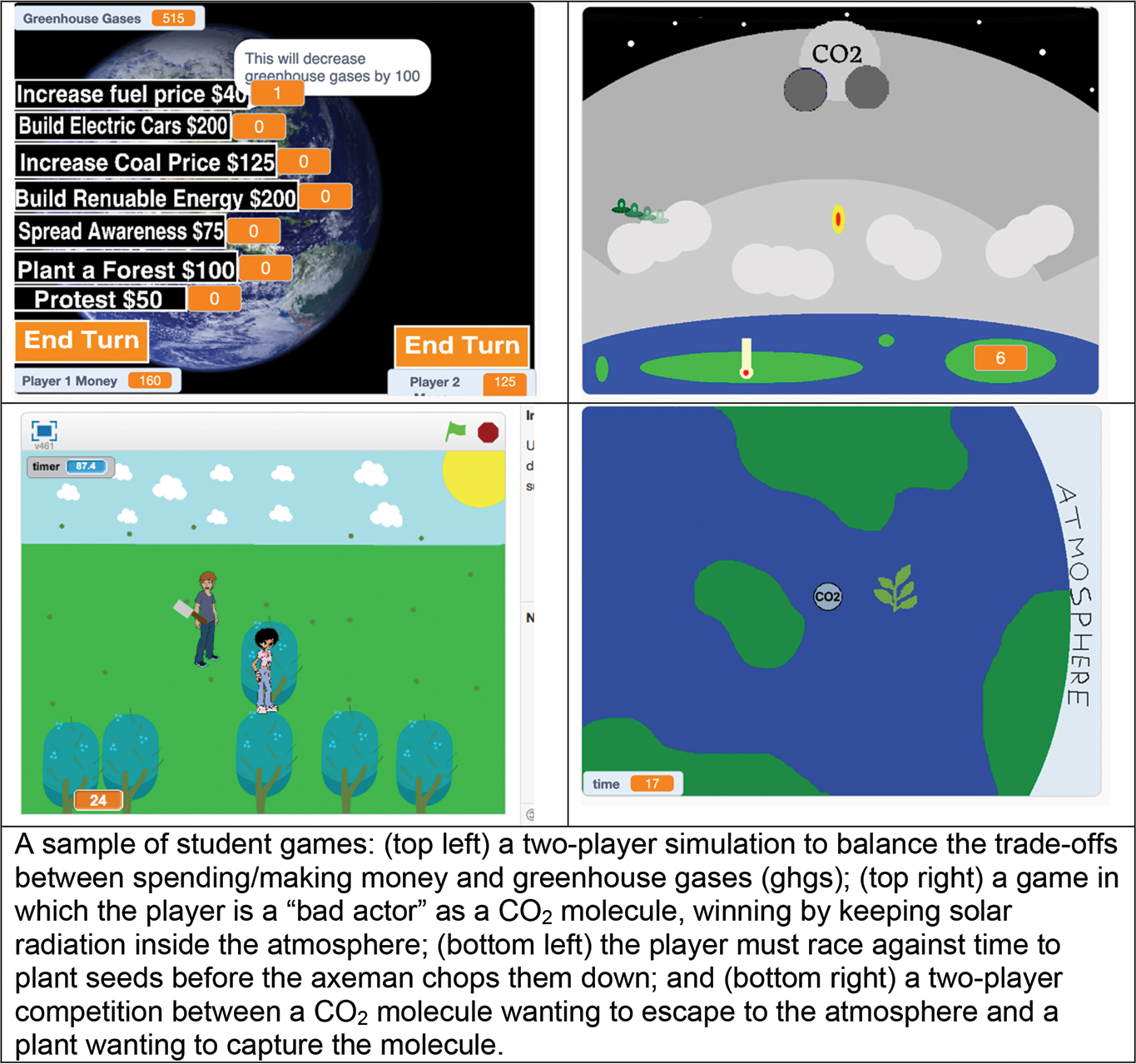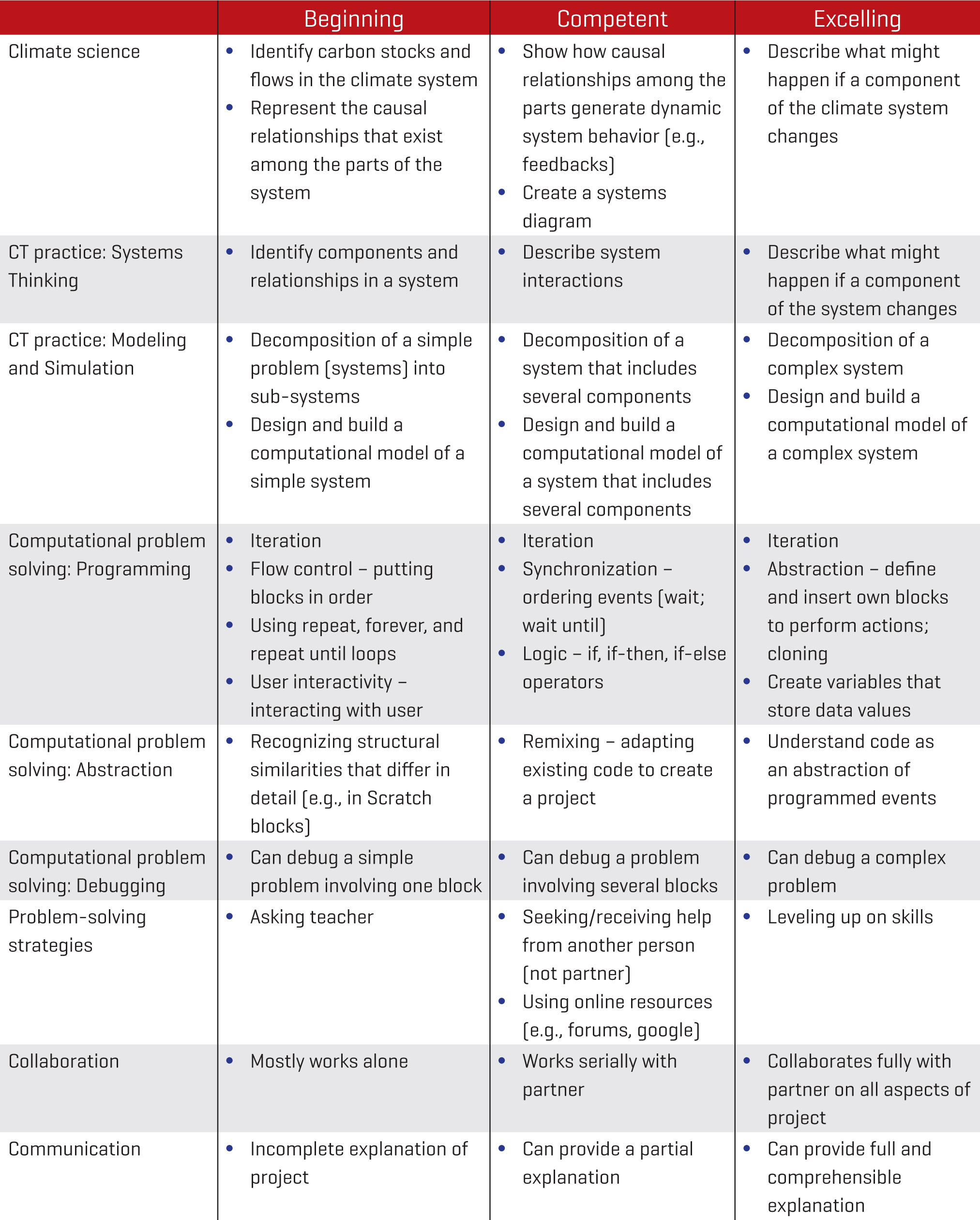Practical Research
Distributing Expertise to Integrate Computational Thinking Practices
Science Scope—March 2020 (Volume 43, Issue 7)
By MICHAEL CASSIDY, ELI TUCKER-RAYMOND, AND GILLIAN PUTTICK
Developing students’ computational thinking (CT) practices in K–12 education has become more prevalent. The Next Generation Science Standards (NGSS) recognize CT practices as core scientific practices (NGSS Lead States 2013). Like the NGSS, we define CT practices as creating representations of systems models. In addition, we include working with others and using ordered steps to carry out operations to logically organize and analyze data from real-world phenomena.
Many technology tools created to support developing students’ CT practices require teachers to learn new kinds of technologies, which can be a hurdle for implementation. However, we believe teachers can take a distributed expertise approach to lower the technical hurdle.
In the Building Systems From Scratch project, we created a curriculum that combined climate content, CT practices, and game design (see Resources). Students created games using Scratch to teach other students about climate systems (see Figure 1). In doing so, students engaged in the CT practices described in Table 1. The research was conducted in Massachusetts and Ohio over three years involving 18 teachers and approximately 1,500 eighth-grade students. We were interested in the ways in which game design supported students’ CT practices and climate science learning. Before implementing the curriculum, teachers participated in professional development to better understand curriculum content, game creation using Scratch, and the pedagogical approach. Participating teachers were not familiar with Scratch and CT practices. Teachers created their own climate game, allowing them to gain a better understanding of the student experience when creating their games. We also modeled and discussed how teachers do not have to master Scratch—or any other technology tool—to develop students’ CT practices. Instead, teachers explored how to rely on existing expertise distributed among students, encouraging students to take responsibility for and rely on each other to learn how to program and research climate content. At a minimum, we recommend that teachers familiarize themselves with Scratch before implementing.

Screenshot of games created by students
| Targeted CT practices in the Building Systems from Scratch project (adapted from Weintrop et al. 2015) | ||||||||||
|---|---|---|---|---|---|---|---|---|---|---|
|
On the basis of our observations of teachers’ approaches to distributing expertise as a way to incorporate unfamiliar technology tools, and on extant research literature, we offer recommendations for teachers to help develop student CT practices.
Distributing expertise
To cultivate expertise in the classroom, knowledge can be distributed across individuals, groups, and tools, creating a system of expertise (Dillenbourg 2006). Distributing expertise across people and tools enables individuals to accomplish work that they would be unable to do if working alone (Kafai and Peppler 2011).
To begin, survey students about their experience using the educational tool you choose to implement. For example, ask students if they have ever heard of, used, or have a lot of experience with Scratch as a programming tool. Students can indicate if they are novices, have some experience, or consider themselves experts.
Recommendations for distributing expertise in the classroom include:
- Make public the names of the experts. This will establish a wider net of expertise in the classroom. Encourage students to look to these students for help first.
- Experts will arise naturally. Students that are not identified as experts will eventually be able to help others. Allow time for multiple students to become experts. Encourage students to move around the classroom to talk with peers.
- Create a “help desk.” Students will learn to do particular tasks on their own. Once they have a skill, create a space online or on the whiteboard where they identify the skill and where other students can ask them how to complete the task.
- Support students to seek materials and information. Encourage students to find information on their own without asking for help from teachers or experts. They may need support to conduct effective online searches.
Focusing on skills rather than abilities
Developing CT practices can be challenging to students, and there will be different ability levels in the classroom. Therefore, assignments should focus on developing students’ skills (what is learned) rather than their abilities (prior knowledge).
Recommendations to develop skills include:
- Group students in somewhat homogeneous pairs. It is best to pair students that have similar expertise (e.g., novice with novice, moderate with moderate, and expert with expert). Paired with others on their level, students have an opportunity to learn together rather than one student taking control of an activity or others becoming “passengers.” Also, in our study, female students tended to be more engaged when collaborating with other female students.
- Create a rubric. A rubric should specify science content to be learned, desired levels of effort, collaboration and communication, and CT practices that were exhibited (see Figure 2).

Rubric for Building Systems from Scratch
Having a shared purpose
Teachers can create a climate of personal responsibility by supporting regular communal sharing and constructive discourse. Assignments should allow students to build artifacts for authentic audiences. This will contribute to increased interest and motivation, which leads to increased learning and creative thinking (Jenkins 2009).
Recommendations for encouraging communal sharing and constructive discourse include:
- Create frequent opportunities for students to provide peer critique. This will support student collaboration and engagement with a diversity of viewpoints and content representations to support iteration.
- Share artifacts with others. At the end of the assignment, have your students present or share their work with other classes, grades, or parents. This will give them an authentic purpose for using the tools and engaging in the learning.
Conclusion
Implementing a new educational tool and developing students’ CT practices can be challenging for science teachers. Nevertheless, students need to develop their CT practices to understand contemporary science. Taking a distributed expertise approach can help alleviate some of the burden. Teachers in our study initially felt unprepared to teach CT practices using Scratch but all were grateful for their experience in giving students the responsibility of learning something new and sharing with others. As one teacher told us, “I was really pleased [with distributing expertise]. It allowed some of these students who have never been seen as an expert, maybe ever, to suddenly be, day after day after day, relied on in the classroom. This was an opportunity where they were the leaders.”
ACKNOWLEDGMENT
This project is supported by the National Science Foundation (NSF) under Grant #1542954. Any opinions, findings, and conclusions or recommendations expressed in this material are those of the authors and do not necessarily reflect the views of the NSF. The authors thank all of the teachers who participated in this project.
Michael Cassidy (michael_cassidy@terc.edu) is a senior researcher and Gillian Puttick is a senior scientist, both at TERC in Cambridge, Massachusetts. Eli Tucker-Raymond is a research associate professor at Boston University, in Boston, Massachusetts.
Computer Science Instructional Materials Teaching Strategies Middle School


